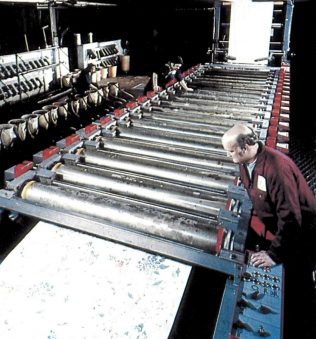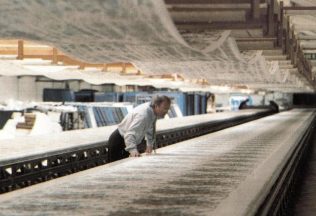Stead's and the Partnership




Don’t change what isn’t broken
The acquisition of Stead’s into the John Lewis Partnership was undoubtedly a big moment for both businesses. However, it was decided that business at the factory should continue exactly as it had done before the Partnership. This was surely testament to just how influential the factory was by this time. Stead’s was one of the world’s leading textile print works, printing for customers far and wide of the Partnership on an international scale. What the Partnership did was to provide the factory with new equipment, resources and staff when required.
Dated methods fazed out
The time-honoured method of block-printing was retained by Stead McAlpin until 1977. The block printers occupied their own mill from where they paced up and down, building up complex patterns with their hand-carved wooden blocks. Block-printing gave by far the richest result and offered an unlimited variety of colours. However it was a slow and costly process. A fast block-printer could produce around seventy yards in a week. Via the other two methods of printing at the factory at this time, roller printing and screen printing, progress was far quicker. A roller printing machine could produce up to thirty yards a minute, and screen printing could do six yards in the same time. However, roller printing was fazed out in 1971, replaced instead by rotary printing machines.
Nickel nicks it
Through the rotary printing machines, part of a design would be transferred photographically onto a perforated nickel screen, used in the printing machine. A printing machine would have 18 of these screens. Bleached cotton would enter the machine at one end, and printed material would leave the other end. Very clever!
Fully computerised
By the late 1990’s, though the method of printing had largely changed, the outcome was the same. Stead’s now used a highly sophisticated computer graphics system, to produce runs of multi-coloured prints for national and international customers.





No Comments
Add a comment about this page